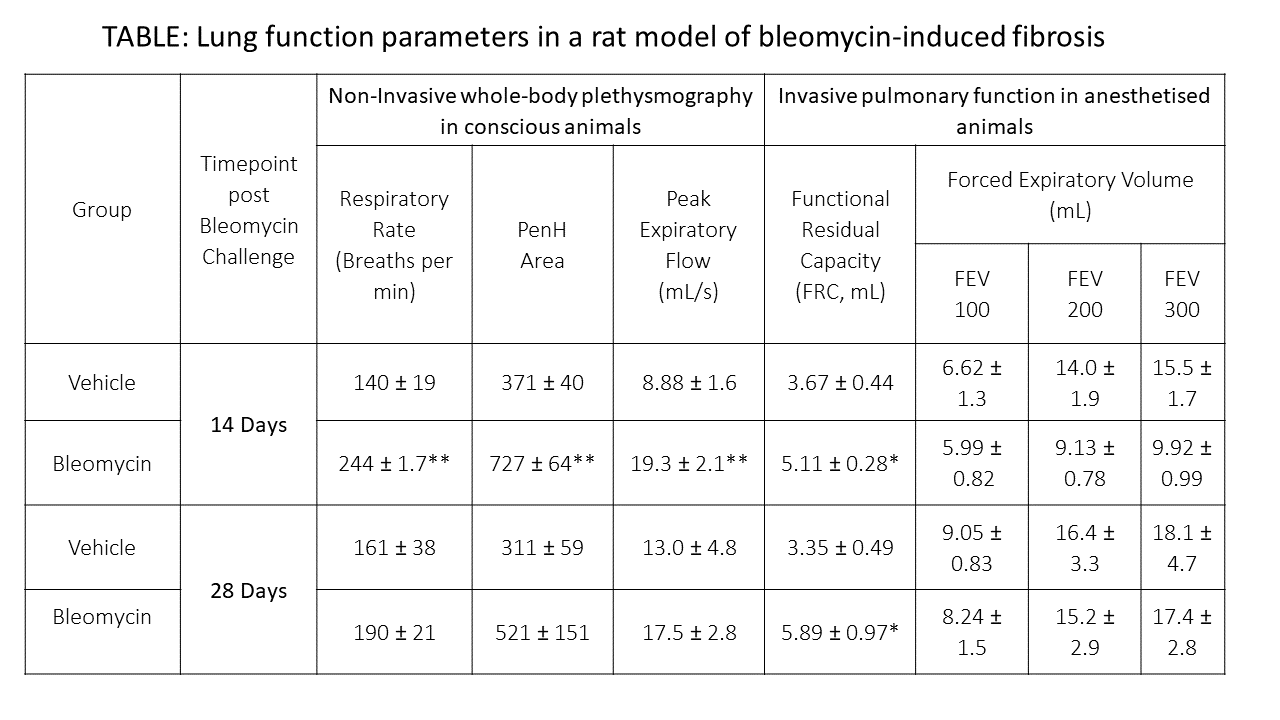Abstract
INTRODUCTION: The bleomycin model of lung fibrosis is widely used to evaluate new treatments for IPF. Previously we demonstrated that lung function asessment in conscious rats, using telemetry and headout plethysmography, was not sufficently sensitive to detect lung function changes associated with fibrosis [1]. The objective of this study was to determine whether invasive pulmonary function assessment is more sensitive. METHODS: Rats were challenged with saline or bleomycin at 0.45 mg/kg on 5 occasions. Lung function was performed on terminally anesthetised rats using the DSI/BUXCO system and on conscious rats using whole body plethysmography. Lungs were evaluated microscopically for fibrosis and inflammation. RESULTS: Bleomycin challenge resulted in peak inflammation at Day 14 while fibrotic scores peaked between Day 14 and 28. Respiratory rate, PenH, PEF and FRC increased in bleomycin challenged rats at Day 14; at Day 28 only FRC was increased. In contrast, reduced FEV was more pronounced on Day 14 compared with Day 28 in bleomycin-challenged rats. CONCLUSION: These data demonstrate that changes in FEV and FRC can be detected following bleomycin challenge using invasive lung function assessment and timing and magnitude of these changes is dependent on both the extent of inflammation and fibrosis. [1] McElroy et al., ERS; 2019, 54 (suppl 63).
